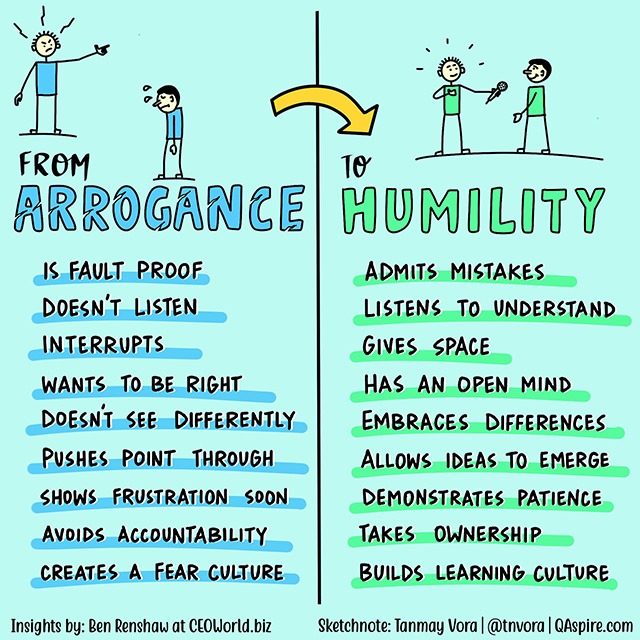Leadership: From Arrogance to Humility
Tanmay Vora
The best leaders people love working with are humble leaders. This does not mean that they are soft in their approach towards the outcomes or weak/spineless in the face of adversity.
Humble leaders simply consider themselves as the medium for the work to get done, not the source of it.
If we think carefully about it, leaders at their best are catalysts and enablers. They weave ecosystem where people can thrive. They build relationships based on mutual trust and respect. They create a safe environment for people to experiment, reflect and learn. They coach and mentor others. They build great cultures by setting right examples. And then, use all of this to nurture performances of their people to get the work done.
Humble leaders focus on the outcomes they can create for their people, business, customers and stakeholders without letting their ego interfere. They are in it to lift others, not to glorify themselves.
However, the reality in the businesses today is quite the opposite. I have seen leaders who constantly seek attention rather than giving it to others. The ones who have a very transactional approach to dealing with people. And the ones who flaunt their positional authority.
In his HBR post titled “If Humility Is So Important, Why Are Leaders So Arrogant?”, Bill Taylor says,
We live in a world where ego gets attention but modesty gets results. Where arrogance makes headlines but humility makes a difference. Which means that all of us, as leaders or aspiring leaders, face questions of our own: Are we confident enough to stay humble? Are we strong enough to admit we don’t have all the answers?
In a 2009 post on Humility, I wrote,
The branch of tree that bears fruits leans down. When leaders assume higher responsibilities, they become more humble.
In another post I expressed,
Like banks of a river, leader holds the context together in order to channel the energies of people. A leader enables flow (progress) by enabling others, asking right questions, coaching others and learning in the process. The focus of a leadership conversation is the needs of others, needs of the context and needs of the customers.
In this context, I loved the depiction of what humble leaders look like in the article “Being Humble: The Importance Of Vulnerability And How Leaders Can Embrace It” by Ben Renshaw. It instantly clarified the leadership behaviors that demonstrate humility and openness.
It helped me and with the hope that it helps you as well, I am sharing a quick sketchnote depiction of behaviors that take leaders “From Arrogance to Humility”
[New] Raise The Bar: Sketchnotes on Leadership, Learning and Change
Having an attitude to lead and a mindset to learn are vital to thrive in a new world of work. The best leaders are relentless learners. This is a collection of 45+ powerful and actionable insights in form of high-resolution sketchnotes. These insights are packed with wisdom to help you raise the bar of leadership and learning for yourself, your teams and your organization. Do check it out.

Related Quote That I Loved
The humbleness of a warrior is not the humbleness of the beggar. The warrior lowers his head to no one, but at the same time, he doesn’t permit anyone to lower his head to him. The beggar, on the other hand, falls to his knees at the drop of a hat and scrapes the floor to anyone he deems to be higher; but at the same time, he demands that someone lower than him scrape the floor for him.
—Carlos Castaneda
